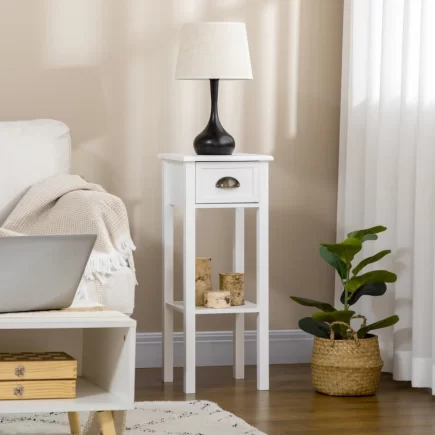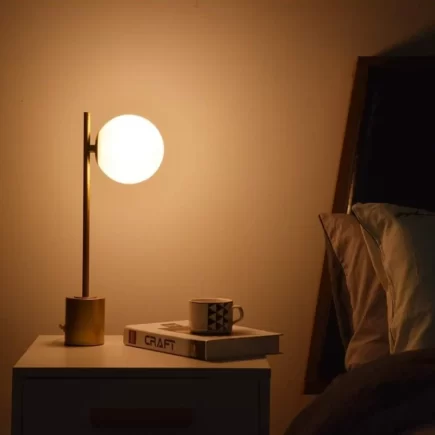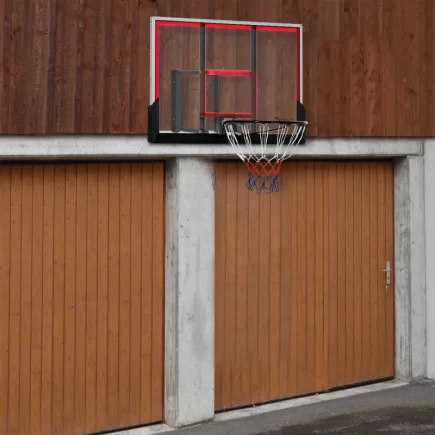Renovating your sideboard is an effective and affordable way to breathe new life into your living room or dining area. Whether your sideboard has become worn out, outdated, or simply needs a fresh coat of paint, painting it is a simple project that can yield impressive results. In this article, we’ll walk you through the entire process, providing expert tips for a smooth and professional finish that will enhance the look of your space.

Materials You Will Need
Before diving into the painting process, make sure you have all the necessary tools and materials to make the job easier and more efficient:
- Paint: Opt for a paint specifically designed for wood or metal surfaces.
- Primer: Helps the paint adhere better and creates an even base.
- Sandpaper: Prepares the surface for better paint adhesion.
- Paintbrushes: For applying paint to smaller and larger areas.
- Painter’s Tape: To protect areas you don’t want to paint.
- Clean Cloth: To wipe away dust and dirt before painting.
- Drop Cloth or Plastic Sheets: To protect floors and other surfaces.

1. Prepare the Sideboard for Painting
Preparation is key to achieving a professional-looking paint job. By properly cleaning and sanding the surface, you create the perfect foundation for your new paint.
Empty the Sideboard
Start by removing all items from the sideboard. This not only protects your belongings but also ensures you don’t accidentally paint over any accessories or decor.
Remove Hardware
Take off any knobs, handles, or locks. This step prevents paint from getting on the hardware, ensuring clean and precise lines around these areas.
Clean the Surface
Before you start painting, clean the entire surface of the sideboard with a damp cloth. This removes dust, dirt, or grease that might affect the paint adhesion. For stubborn dirt, you can use a mild soap solution to clean the surface thoroughly.
Sand the Surface
Lightly sand the entire sideboard to remove any rough patches, old paint, or imperfections. Sanding creates a smooth surface and helps the new paint adhere better. Once sanded, wipe off any sanding dust with a clean cloth.

2. Apply Primer
Primer helps to ensure a lasting paint job by providing a smooth base and preventing stains or rust from seeping through.
Choose the Right Primer
Select a primer that is suited for the material of your sideboard. For wood, use a wood primer. Using the correct primer ensures the paint bonds properly to the surface.
How to Apply Primer
Apply a thin, even coat of primer to the sideboard using a paintbrush. Make sure you cover all edges, corners, and flat surfaces. Allow the primer to dry according to the manufacturer’s instructions (usually about 1-2 hours) before moving on to the next step.

3. Paint the Sideboard
Choosing the right paint and applying it in multiple coats will result in a smooth, durable, and beautiful finish for your sideboard.
Choosing Your Paint
Select a high-quality paint that’s designed for wood surfaces. Oil-based paints are durable and perfect for long-lasting results, while water-based paints provide a smooth, washable finish. Choose a satin or semi-gloss finish, as these provide a polished look and are easy to clean.
Apply the First Coat
Using a small paintbrush, apply the first coat of paint. Start with the edges and work your way toward the flat surfaces. For larger areas, you can use a paint roller to speed up the process. Be sure to apply thin, even layers of paint to avoid drips.

Let the Paint Dry
Allow the first coat to dry completely before applying a second coat. This drying process typically takes 2-4 hours, depending on the type of paint you are using. Always check the manufacturer’s instructions for specific drying times.
Apply the Second Coat
Once the first coat is dry, apply a second thin coat of paint to ensure full coverage. Be sure to cover any areas that may have been missed in the first coat. After the second coat, allow the paint to dry completely before handling the sideboard.
4. Reassemble the Sideboard
Once the paint has dried, it’s time to put everything back together. Carefully reattach the hardware and place the shelves or drawers back into their original positions.
Reattach Hardware
After the paint has dried completely, carefully reattach any hardware that was removed earlier. Make sure the screws are tightened and the hardware is aligned properly for a polished, finished look.

Reorganize the Interior
Place any shelves or drawers back in their original positions. This is a great time to reorganize the interior if needed, ensuring that your sideboard is not only aesthetically pleasing but also functional.
5. Final Touches
A few finishing touches can help refine your work, ensuring that your sideboard looks perfect from every angle. Once the paint is completely dry, take a step back and inspect your sideboard. Look for any imperfections or areas that might need touch-ups. If necessary, use a small brush to fix these spots.
Give Your Sideboard a Fresh Makeover
Painting your Sideboard is a simple yet effective way to refresh your space. Whether updating an old piece or changing the color to fit new décor, this DIY project makes a noticeable impact. By following the steps, preparing the surface, applying primer and paint, and reassembling the sideboard, you’ll achieve a professional result that boosts both beauty and durability. Take your time, follow each step, and enjoy transforming your sideboard into a stunning focal point in your home.
FAQs
1. Can I paint a sideboard without sanding it first?
It’s not recommended to skip sanding, as it helps the paint adhere better. If sanding isn’t possible, use a bonding primer specifically designed for smooth or glossy surfaces to ensure a lasting finish.
2. How long should I wait before putting items back on my sideboard after painting?
It’s best to wait at least 24-48 hours for the paint to fully cure before placing items on the sideboard. This ensures the paint has properly dried and hardened, preventing any smudges or marks.
3. Can I paint a sideboard with a brush or should I use a roller?
Both brushes and rollers work well for painting a sideboard. Brushes are great for edges and detailed areas, while rollers are faster for large, flat surfaces. A combination of both gives the best results.




























